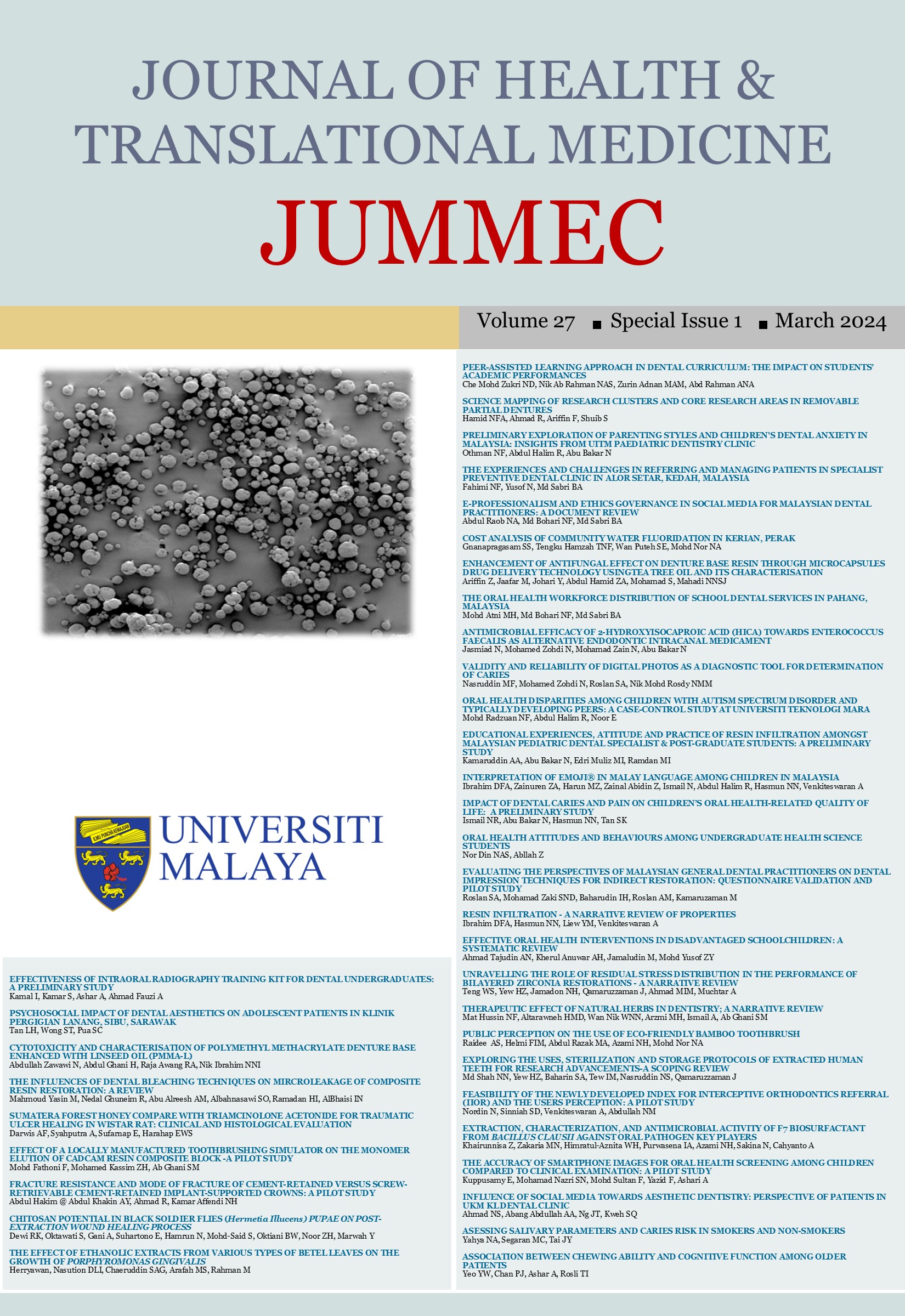INTERPRETATION OF EMOJI® IN MALAY LANGUAGE AMONG CHILDREN IN MALAYSIA
Received 2024-02-19; Accepted 2024-03-22; Published 2024-03-25
DOI:
https://doi.org/10.22452/jummec.sp2024no1.13Abstract
The existing dental anxiety scales for paediatric patients tend to categorize and label children according to their level of cooperation. However, human emotions are more complex, and each child is unique. Hence, a more dynamic and interactive method should be introduced for a better understanding of the patient’s current state of emotion. The aim of this study was to investigate the interpretation and understanding of children towards frequently used emoji® for the development of an emoji® dental emotional spectrum. Both online and physical surveys were conducted among 147 Malay language-speaking children aged between 4-to-16 years in Malaysia. The children were asked to interpret 30 pre-selected emoji® images in their own words using the Malay Language. The pre-selected emoji® represent happiness, neutral, fear, sadness, and anger. The interpretations were subsequently based on their similar meaning, a process that was validated by two experts in the field of linguistics. The study involved participants with an average age of 9.2 years, with the majority of them being female (61.2%). Of the 30 pre-selected emoji® images used in this study, 13 had respondent agreement exceeding 60% which was the threshold set for suitability for use in evaluating dental emotion. The remaining 17 emoji® images have a remarkable variability in the interpretation which indicates potential misinterpretation by the respondents. The 13 emoji® images range from happiness, neutral, fear, dislike, unhappy, sad, anxious, and angry with the emoji® images which represent “excited” (94.0%), “loudly crying” (97.3%) and “angry” (91.8%) had the highest agreement. Meanwhile, the emoji® images represented “confounded” and “downcast” had the least agreement among respondents (1.3%). Despite the universal meaning imposed by emoji®, the interpretations may vary in different populations and age groups. Emoji® images hold the potential to serve as a valuable tool for identifying and managing children’s behaviour.
Downloads
Downloads
Published
Issue
Section
License
All authors agree that the article, if editorially accepted for publication, shall be licensed under the Creative Commons Attribution License 4.0 to allow others to freely access, copy and use research provided the author is correctly attributed, unless otherwise stated. All articles are available online without charge or other barriers to access. However, anyone wishing to reproduce large quantities of an article (250+) should inform the publisher. Any opinion expressed in the articles are those of the authors and do not reflect that of the University of Malaya, 50603 Kuala Lumpur, Malaysia.


